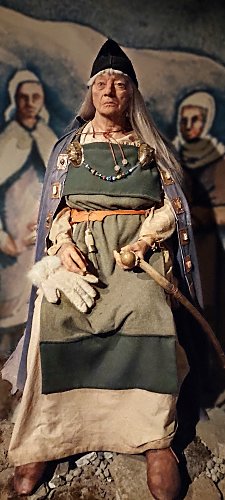Finished the knitting on my pair. Kitchner and ends weaving will get done tomorrow. I did run out of yarn, and switched to some home-spun from 2013 I had for the toe. That yarn was a good match for thickness, and well-spun, but seemed like it was still greasy. It dragged through my fingers and over the slick needles. Not fun. The socks fit and are well done, so I don't care about the off color at the one toe - I wasn't spending another $15 to get a third skein shipped. I'm still waiting on the yarn to finish BF's sock. Couldn't find it available anymore in the US, and had to order direct from the farmer in the UK - Expensive!...and she hasn't gotten back to me about it, she said earliest would be Wednesday. Maybe she is off sourcing hay.
Looking forward to the two-sock photos when you get a chance.
Tin can knits has a good basic shawl tutorial, and a "tab" start for the base of a top-down knit. I don't need to learn that for the next project, but I want to try out the mini practice shawls they show. Oberle has a Ravelry pattern I found today that is a Faroese with a simple eyelet pattern on spaced out rows. Not sure that counts as lace, but the shawl is pretty, and I may choose that one for a first attempt instead. Plenty of time; this was an expensive month, so it will be a while before I purchase the yarn for a full size project. In the meantime, there is plenty of greasy home-spun to use up on practice swatches.
Looking forward to the two-sock photos when you get a chance.
Tin can knits has a good basic shawl tutorial, and a "tab" start for the base of a top-down knit. I don't need to learn that for the next project, but I want to try out the mini practice shawls they show. Oberle has a Ravelry pattern I found today that is a Faroese with a simple eyelet pattern on spaced out rows. Not sure that counts as lace, but the shawl is pretty, and I may choose that one for a first attempt instead. Plenty of time; this was an expensive month, so it will be a while before I purchase the yarn for a full size project. In the meantime, there is plenty of greasy home-spun to use up on practice swatches.






 ...) That is something I don't see on any of the how-to sites for making these clothes. Given lack of availability and the taboo, understandably so, but what surprised me is that I don't even remember mention of it. My previous mental image had been all woolens and linens.
...) That is something I don't see on any of the how-to sites for making these clothes. Given lack of availability and the taboo, understandably so, but what surprised me is that I don't even remember mention of it. My previous mental image had been all woolens and linens.